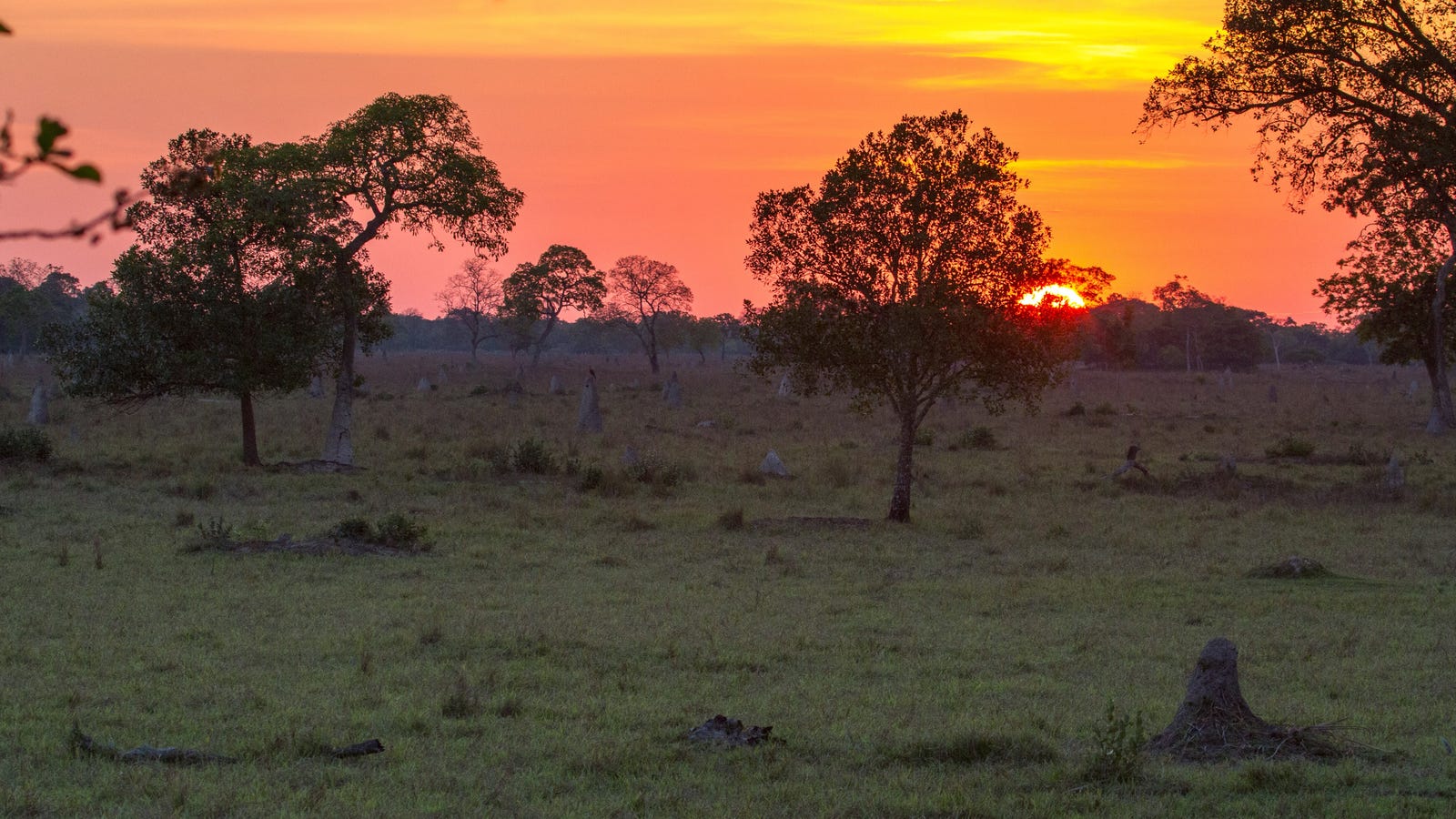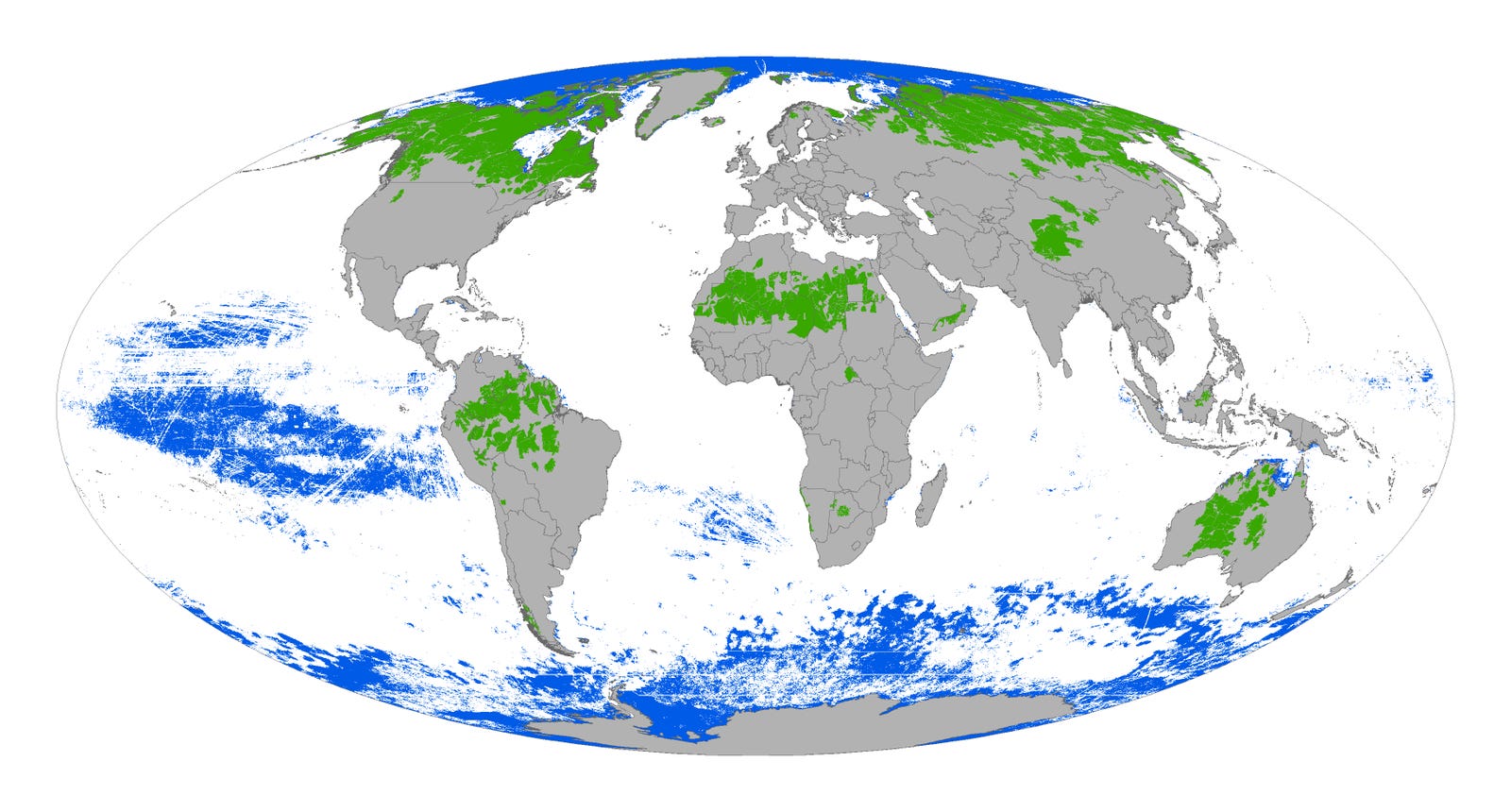
[ad_1]
There are few corners of the planet humanity has yet to occupy or change. Truly wild areas are rarities, and a new map has carefully identified where exactly the last ones are.
It reveals that just 20 nations control 94 percent of the world’s remaining wilderness, excluding Antarctica and the high seas. And within those 20, five nations–Russia, Canada, Australia, the US and Brazil—control a whopping 70 percent. In short, these vital havens for life are under the watch of a small handful of countries, some of which have decidedly dubious track records when it comes to conservation.
The new map and accompanying data, provided as part of a Nature commentary, represent the culmination of several years of work led by the University of Queensland and the Wildlife Conservation Society (WCS).
Research published between 2016 and 2018 formed the foundations of this work. Using high-resolution satellite imagery, the researchers mapped the world’s remaining terrestrial and marine wilderness by looking at the extent to which human infrastructure or systems, from agricultural lands and roadways to fishing and industrial shipping lanes, had encroached into the natural environment. They defined “wilderness” as sizeable, contiguous areas free from human pressures.

The proliferation of industrial activity around the planet means that there wasn’t much wilderness left to map. Today, the authors note that more than 77 percent of land and 87 percent of the ocean has been directly altered by us in some way. Every year, vast stretches of once-wild land or sea disappear.
This is a big deal. The team note that the remaining wilderness patches are the only places that contain species at near-natural levels of abundance. All of life on Earth is inextricably interlinked, and wild enclaves represent genetic and ecological libraries that deserve to be preserved. These areas–from boreal forests to seagrass meadows–are also often important carbon sinks, making them significant buffers against climate change.
At the same time, many of these wilderness areas are home to indigenous communities that live harmoniously with their environment. Sadly, they are facing intense pressure to abandon their way of life as the modern world creeps in.
While some environmental laws do apply to these areas, many remain poorly protected from rampant development. Preserving something isn’t viable if you haven’t properly quantified it, which is why this detailed, global map—the first of its kind—exists.
“A key takeaway from this study is that the Earth is not limitless,” Tierra Curry, a senior scientist at the Center for Biological Diversity who was not involved in the research, told Earther. “If we care at all about our own survival, we must protect these areas and their inhabitants.”

The new map has been released just before this month’s 14th gathering of the Conference of the Parties to the Convention on Biological Diversity in Egypt, where the scientific community, along with government and NGO partners, will produce a roadmap for protecting biodiversity post-2020. The researchers hope their work will encourage participants to come up with a target for the preservation of Earth’s remaining wilderness. The team called conserving entirety of the remaining intact ecosystems “a bold yet achievable target.”
Lead author James Watson, professor of conservation science at the University of Queensland and the director of Science and Research Initiative at the WCS, told Earther that it’s possible that those top five nations will act to preserve their wilderness. They nevertheless need to nations need to “specifically target the retention of these places.”
“The thing to remember is that it’s just about stopping industry from going in,” he said. “That’s it.”
Source link